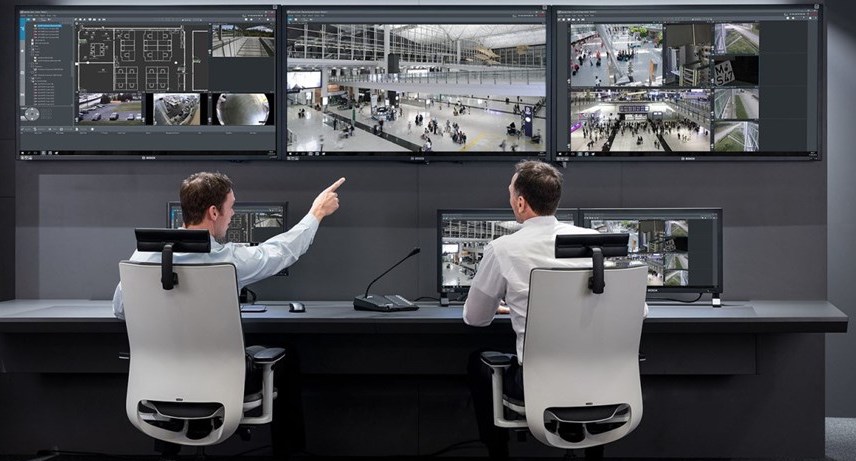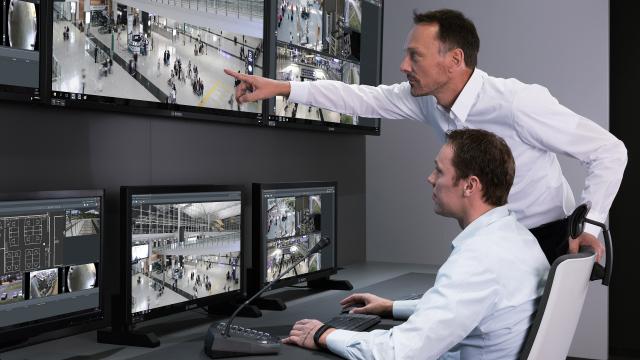VMS Software
VMS: Video management systems and software explained

There are some important factors to consider when selecting video/security management software.
Architecture — An NVR solution, with a number of computer workstations, requires standalone software at each station. Typically, there is a separate configuration between the NVR and each workstation. Modern video management systems use server-client architecture that constantly communicates, which leads to greater flexibility and scalability, and simpler configuration.
Licensing — In addition to scope and cost, considerations include: is licensing simple to install and maintain? Do you have to install licences individually, or can they be done in block? Do you buy the licence outright, or is there a recurring cost? How many clients are permitted with the licence? Look for licences that are simpler to install and maintain, and minimise valuable engineering resource.
SMA — Make sure a Software Maintenance Agreement is available at reasonable cost (typically 15 percent per annum) from a trusted vendor to ensure that regular upgrades are available and specialist support is available.
Efficiency — Elegant code creating efficient processing can make the difference between whether one, two, or three separate servers are required to run multi-camera software, and the more elegant VMS solutions can run over one hundred cameras on a well specified server.
Camera integration — The latest version of ONVIF, Profile S, ensures greater compatibility between IP cameras and VM systems. However, high end IP camera manufacturers put a lot of R&D effort into adding intelligent features into their cameras, and the experienced recommendation is to only use a VMS that has undertaken full and deep integration of the camera, and includes those details on its integrated devices list.

Video Management System
The size and complexity of this list is a measure of how much work has been undertaken by the VMS manufacturer in collaboration with the camera manufacturer, and key features such as motion detection, alarm triggers, outputs, and audio have, to date, been best addressed by a full and complete integration of the camera to the VMS.
Connectivity — Connectivity with other platforms, including web interfaces and mobile devices, is now the expected norm on modern VM systems.
Configuration — Look for simple and intuitive user configuration and menus, and logical and user-friendly engineer interfaces with plenty of built-in help files.
Communication with other devices — Some modern VM systems allow a simple and cost-effective methodology for basic communication with other devices, such as alarm panels, access control, intercom, and fire systems. Although this isn’t technically “full integration” — with continual two-way communication — it does mean that these systems offer an effective path to achieving some of those integration goals, without the need to revert to enterprise system technology.
Video Management System Hardware
Load — Servers are generally selected by matching the load capacity of the server in megabytes with the load requirements of the system.
Storage — Current full depth rack mount servers can typically accommodate up to 8 x4TB hard disks, which is a large amount of storage, unheard of only a few years ago. Kryder’s Law, relating to rapid increases in disk storage density, appears to be holding true. For example, a professional server with a suitable load capacity can be comfortably used with up to 70 cameras and 32TB of storage, based on a load calculation using H.264 compression, 1280×720 resolution, 25fps, 30 days recording, and average motion.
Operating systems — These are determined by the VM software requirement, and modern VM systems typically run on Microsoft Professional Windows and server formats, with many mid-range VM systems operating successfully on Windows 7.
Reliability and redundancy — There’s a lot of information out there about this, but general advice in the mid-range is to pick a known and trusted brand — or for those in the know, tried, tested, and trusted components. Modern servers from quality brands tend to be reliable, but power supply and hard disk failures can occur from time to time, and a methodology for dealing with these should be considered.
Important Video Management Systems recommendations
Ensure that server hardware is not only fit for purpose, and compliant with the software manufacturer’s minimum specification, but is also correctly matched to the application by form factor (eg. full depth rack mount), and connectivity (eg. network ports and monitor outputs).
Seek out software that is well structured, efficient, fully integrated to the cameras you wish to use, and has a simplified methodology to communicate with third-party security devices.
There are many benefits to a VMS, but the downside can be the sheer amount of choice and flexibility, leaving us bewildered and confused like rabbits startled in the headlights of oncoming traffic!

- Main Features
- Motion detection
- Distributed processing
- Alarm I/O
- License plate detection
- License plate recognition
- Hybrid analog / digital recording
- Single recorded stream, multiple views
